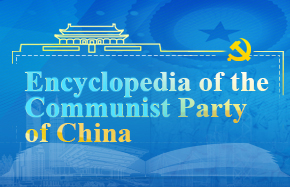Yuan on move, but not to top
The yuan will get near the top of the East Asian monetary order, but will not challenge the US dollar's position as the world's top currency, according to an expert in Washington.
It is possible for the yuan to "become one of the dominant currencies in East Asia", but not "a globally convertible dominant currency" because of its "hybrid model of renminbi internationalization" and "limited use in the global market", Injoo Sohn, visiting fellow at the Brookings Institution Center for East Asia Policy Studies, said Thursday in Washington.
The Chinese currency, known as both the yuan and renminbi (RMB), climbed to the ninth spot in the 2013 global transaction list of percentage shares of average daily currency trading, from 35th in 2001, according to the latest triennial Central Bank survey by Mauldin Economics and the Bank for International Settlements.
While the growth of RMB in international trade and investment is "nothing short of remarkable", there is still a "huge gap" compared with the US dollar, which accounts for 87 percent of currency transactions, while RMB is at 2.2 percent, said Sohn, an associate professor at the University of Hong Kong. He spoke at the Sigur Center for Asian Studies in the George Washington University Elliot School of International Affairs.
By the end of 2014, RMB was the fifth most-traded currency, trailing the US dollar, euro, British pound and Japanese yen, according to the Society for Worldwide Interbank Financial Telecommunications' report.
Ding Yifan, deputy director of the Research Institute of World Development at the China Development Research Center, said last year that the yuan is not mature enough to become an international reserve currency.
"China needs to open its financial markets wider," said Ding. "The opening of capital accounts is the touchstone for the yuan internationalization."
Ding said China should give up the fixed exchange rate to allow a free float of its currency
Daniel McDowell, assistant professor of political science at the Maxwell School of Syracuse University, said the maturation of the yuan should be viewed as a positive development for the US economy.
"Americans should not view the yuan's rise as a threat to U.S. economic might; rather, it should be understood as an opportunity that will pave the way for a more balanced relationship between the world's two economic superpowers," McDowell said in an earlier report.
He also said that US lawmakers have been calling for the yuan to appreciate since 2003, arguing that the currency's artificial weakness costs American jobs and contributes to the large US trade deficit with China.
McDowell said that what lies ahead for the global monetary system in the coming decade is a period in which "the Chinese currency will assume its rightful place in the hierarchy of global currencies - among the euro, yen, pound and others - but still below the dollar for many years to come".
Primarily using RMB in cross-border trade with countries such as Cambodia, Mongolia, Russia and Vietnam in the early 2000s, China promoted the offshore RMB transactions via Hong Kong to develop an offshore RMB deposit market in 2004.
The People's Bank of China, the country's central bank, released a report calling for RMB internationalization in 2006.
The pilot plan for RMB cross-border trade settlement launched in five Chinese cities: Dongguan, Guangzhou, Shanghai, Shenzhen and Zhuhai. It expended to cover Hong Kong, Macau and ASEAN in 2009, to all exporters with export-trade business licenses in 2012.
The RMB Qualified Foreign Institutional Investor quotas also were extended to the United Kingdom, Singapore, France, Korea, Germany and Canada in 2013 and 2014.
Sheng Yang in Washington contributed to this story.




















